How to Make a Terrarium

Published December 7, 2023
You don’t need a lot of space to have a garden. You don't even need to go outdoors. With a glass container, some potting soil, pebbles and a few houseplants, you can learn how to make a terrarium, a kind of miniature garden, to enjoy inside your home. This is a fun project to do for yourself, as a gift or with your kids.
Difficulty:
Beginner
Duration:
Under 2 hours
Table of Contents
What is a Terrarium?
Choose Plants and Prep the Container
Add Base Layer
Add Soil and Plants
More Terrarium Ideas
What is a Terrarium?
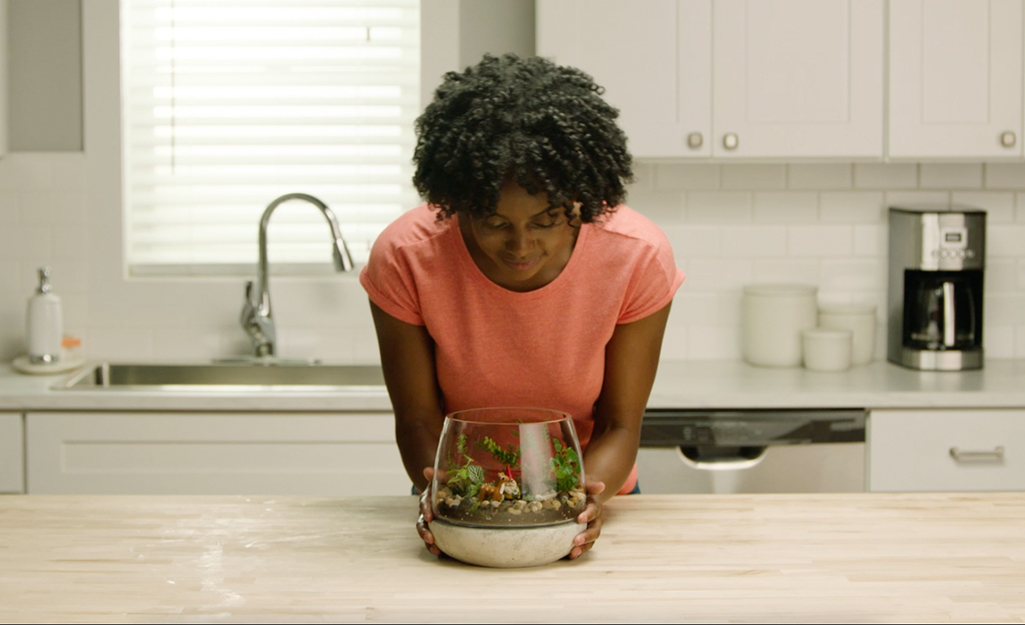
A terrarium is a glass jar, bowl or other transparent container used to grow small plants, and it works like a mini-greenhouse.
After you water the plants in the container, water begins to condense inside. When it drips back down onto the plants, they get another watering, which makes a terrarium very low-maintenance.
An open terrarium is just what it sounds like. It’s a container with an opening that lets air circulate. In an open terrarium, you’ll need to add more water from time to time, as it will eventually evaporate, and the soil and plants will begin to dry out.
A closed terrarium is a glass container with a lid. It should be opened about once a month to let fresh air in. While it’s open, some of the moisture inside also evaporates, so you’ll need to add a little more water. You just won’t need to water as often as with an open terrarium.
Choose Plants and Prep the Container
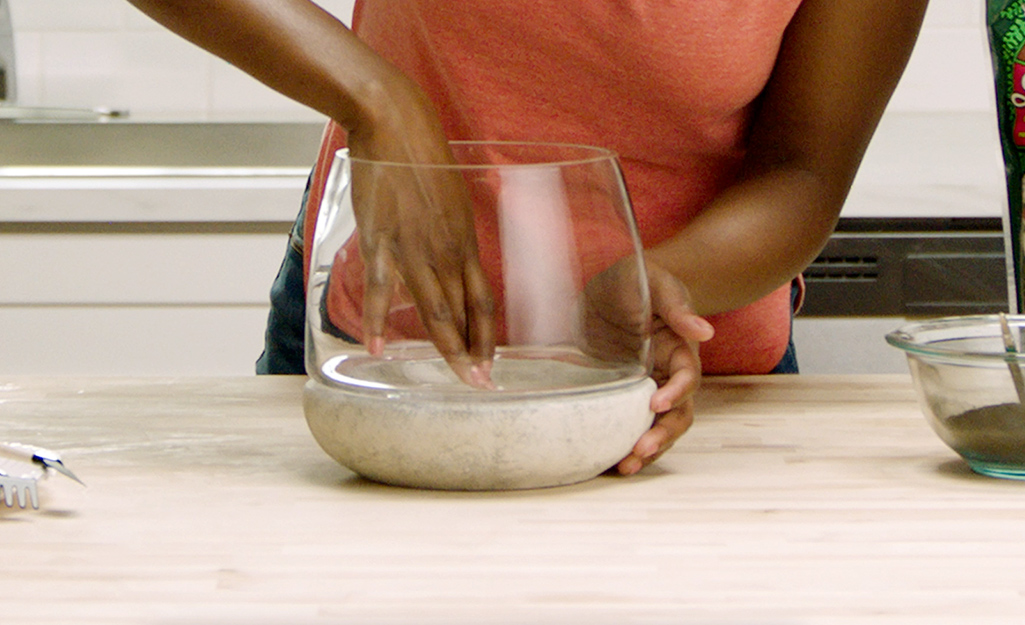
You'll want to start by choosing your plants for the terrarium. Choose small plants that need the same basic amounts of light and water for your terrarium. Good choices include:
- Small ferns
- Creeping Fig
- Polka Dot Plant (Hypoestes)
- Pothos
- Baby’s Tears
- Nerve Plant (Fittonia)
- Peperomia
- Dwarf Black Mondo Grass
- Golden Clubmoss
Next, prep the container. Start with a clear, clean glass container. It will be easier to add the plants if you choose one with an opening large enough to reach inside. You can make a simple tool to use for small openings.
Add Base Layer
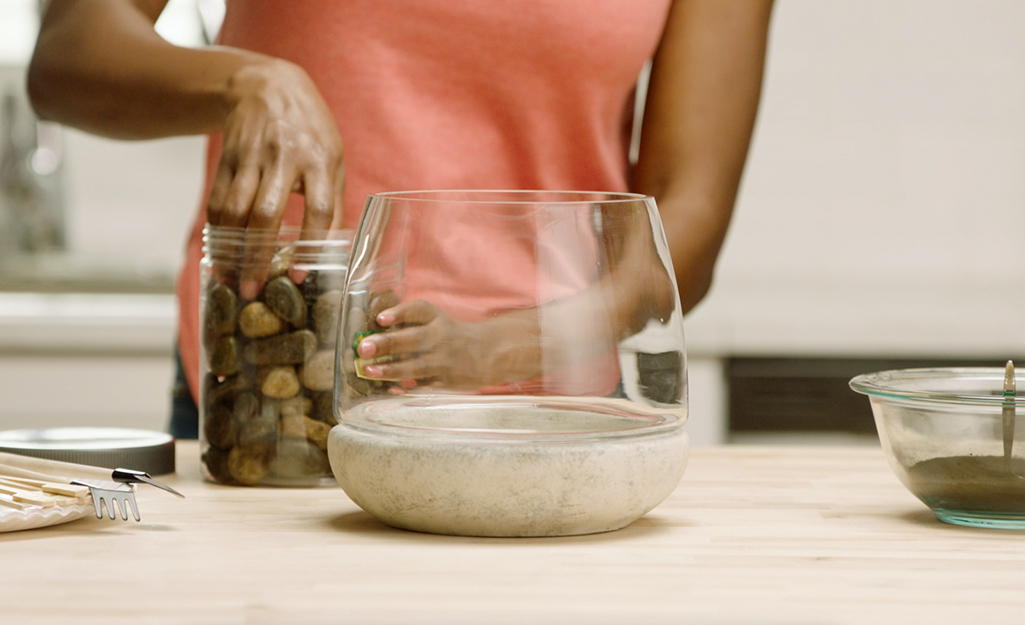
- Add about one inch of pebbles in the bottom. If the opening is narrow, put them on a paper plate and fold them into a funnel shape. Put the tip of the funnel into the neck of the container and gently shake the pebbles out. If you don’t have a paper plate, use a few sheets of newspaper. The pebbles will let excess water drain away from the plants. If plant roots sit in water, they won’t get enough oxygen and will die.
- Put a light layer of activated charcoal chips over the pebbles. Stores that carry pet and fish supplies will likely have this charcoal. It will help absorb odors that can build up over time, especially in closed terrariums.
- Add a layer of moss over the charcoal to help keep the charcoal from floating when you water the plants. If you can’t reach into the container, fold the moss or tear it into small pieces and drop it in. If you need to move the moss around, use a wooden skewer or a chopstick.
Add Soil and Plants
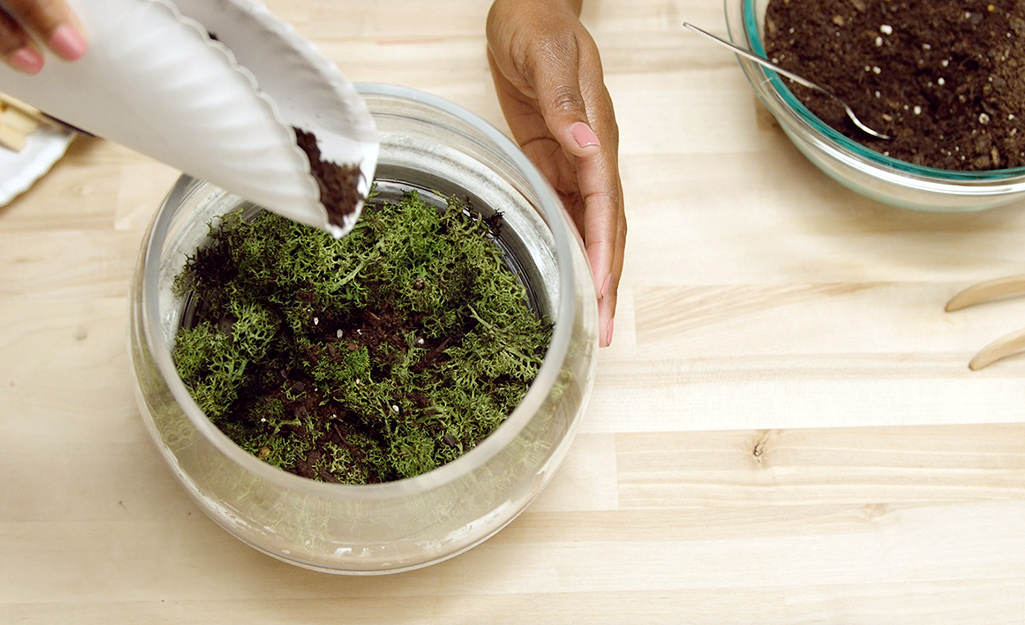
- Use your funnel to add a couple of inches of potting soil over the moss.
- Remove your plants from their nursery containers and gently loosen the roots with your fingers. If you’ll be looking at only one side of the terrarium, put taller plants toward the back. Remember to leave room for them to grow and don’t crowd too many into the container.
- Use a spoon or your fingers to make holes for the plants in the potting soil. Add a cork to the end of your skewer or chopstick to make a tamping tool and use it to gently firm the soil around the plants.
- If you get any soil on the glass, use a small, dry paint brush to remove it.
- Add another layer of moss around the plants for a finished look or use more pebbles or sea glass. Water lightly with a small watering can or spray bottle. Avoid watering so much that water collects in the bottom.
- Trying adding small tools, shells or other decorations to your terrarium, if desired. Small children’s toys, like plastic dinosaurs, to make a fun “prehistoric jungle” terrarium.
- Keep your terrarium out of direct sunlight, so the sun coming through the glass won’t burn the plants. Prune them when needed and rotate the terrarium occasionally, so they don’t lean in just one direction.
More Terrarium Ideas
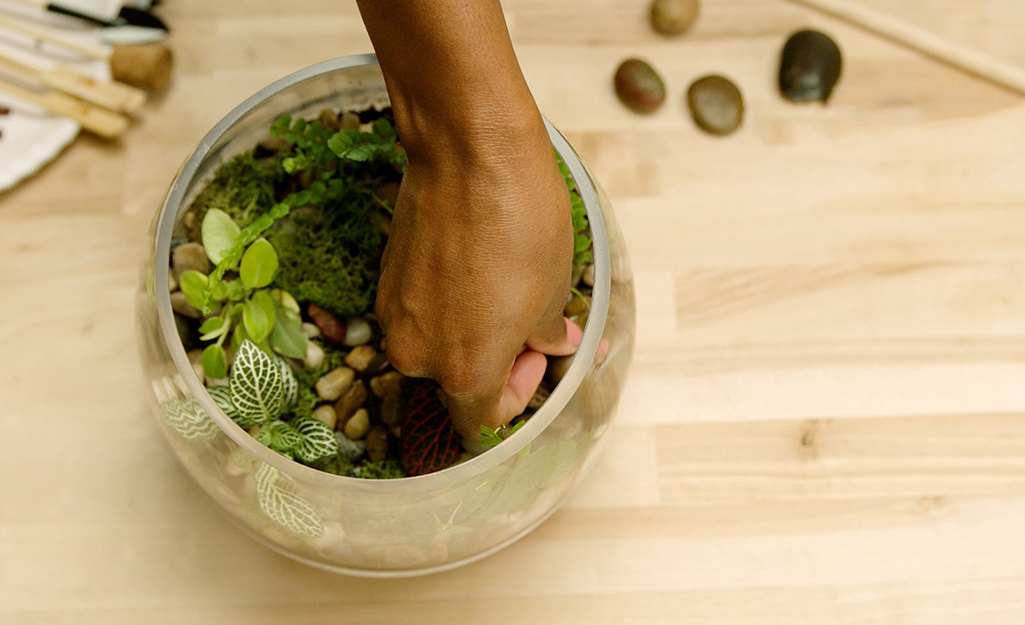
Try different kinds of plants and vary your decorations to make unique terrariums:
- Grow miniature African violets in a terrarium to enjoy their colorful blooms. Be aware that they'll need more care than most other small houseplants. Give them an open terrarium, because water evaporates slowly from closed containers. They can die if they stay too wet. They also need good air circulation.
- Follow the directions above for making a terrarium but use African violet potting mix instead of regular potting soil. Position your plant so that it's not touching the glass. Keep the terrarium in bright, indirect light. Water lightly when the soil begins to dry out. Remove faded flowers and any leaves that show signs of fungus, mildew or other problems. In a humid terrarium, diseases and pests can spread fast.
- For another unique look, use air plants in an open container. They need air and small amounts of water that they absorb through their leaves. They don’t need soil, so just put them inside the terrarium and mist them a few times each week. In hot weather, take them out once a week and soak them in a bowl of water for an hour or two. In cold weather, mist them a few times each week. Soak them about every two to three weeks. Use rainwater, purified water or tap water that can stand for 24 hours so the chlorine can evaporate.
- Keep your air plants in bright, indirect light and they may bloom for you.
Knowing how to make a terrarium allows you to build a mini garden in your home. Play around with different plants and accents to make yours unique. Ready to start your project? The Home Depot delivers online orders when and where you need them.























